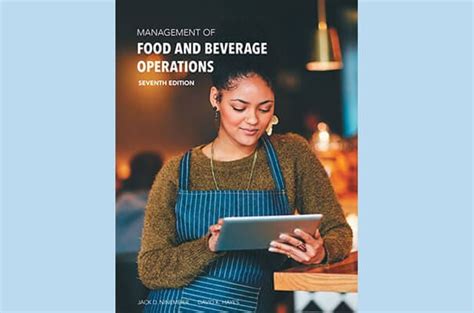A Complete Recipe for Managing Food and Beverage Operations
Running a successful food and beverage (F&B) operation requires more than just delicious food and drinks. It demands meticulous planning, efficient execution, and a keen eye for detail. This comprehensive guide provides a recipe for success, covering key areas to ensure your F&B business thrives.
I. Recipe Ingredients: Key Areas of F&B Management
To create a thriving F&B operation, you need a blend of key ingredients, each playing a vital role:
A. Menu Engineering & Development: The Heart of Your Recipe
Your menu is the cornerstone of your business. It should be:
- Profitable: Analyze ingredient costs and pricing to ensure a healthy profit margin on each item. Consider using menu engineering techniques to identify your star players (high profit, high popularity) and plow horses (high popularity, low profit).
- Appealing: Develop dishes that are both delicious and visually attractive. Consider seasonal ingredients and customer preferences. High-quality food photography is crucial for attracting customers.
- Varied: Offer a diverse selection to cater to a wide range of tastes and dietary needs. Include vegetarian, vegan, and gluten-free options where appropriate.
- Efficient: Design your menu to minimize food waste and maximize kitchen efficiency. Choose ingredients that can be used in multiple dishes.
B. Sourcing & Inventory Management: The Foundation of Your Recipe
Efficient sourcing and inventory management are critical to cost control and operational smoothness:
- Supplier Relationships: Build strong relationships with reliable suppliers who can provide high-quality ingredients at competitive prices. Negotiate favorable terms and ensure consistent delivery.
- Inventory Control: Implement a robust inventory management system to track stock levels, minimize waste, and prevent shortages. Consider using inventory management software to streamline the process.
- Food Safety & Storage: Maintain strict adherence to food safety regulations. Implement proper storage procedures to ensure food quality and prevent spoilage. Regular sanitation checks are essential.
C. Staff Management & Training: The Chefs in Your Kitchen
Your staff is your most valuable asset:
- Recruitment & Selection: Hire skilled and passionate individuals who are committed to providing excellent customer service. Conduct thorough background checks and interviews.
- Training & Development: Provide regular training on food preparation, customer service, and safety procedures. Cross-training employees enhances flexibility and efficiency.
- Motivation & Retention: Create a positive work environment that fosters teamwork and encourages employee growth. Offer competitive salaries and benefits to retain top talent.
D. Customer Service & Experience: The Flavor of Your Recipe
Exceptional customer service is paramount:
- Friendliness & Efficiency: Train staff to be friendly, attentive, and efficient. Respond promptly to customer requests and address complaints professionally.
- Cleanliness & Ambiance: Maintain a clean and welcoming atmosphere. Create a pleasant dining experience through appropriate lighting, music, and décor.
- Feedback & Reviews: Actively solicit customer feedback and respond to online reviews. Use this feedback to improve your operations and enhance the customer experience.
E. Marketing & Promotion: Spreading the Word about Your Recipe
Effective marketing is crucial for attracting customers:
- Branding & Identity: Develop a strong brand identity that reflects your unique selling proposition.
- Online Presence: Create a user-friendly website and engage with customers on social media platforms.
- Promotions & Offers: Run promotions and special offers to attract new customers and reward loyalty.
- Local Partnerships: Collaborate with local businesses and community organizations to expand your reach.
II. Preparing the Dish: Implementation & Execution
Once you have gathered your ingredients, it's time to execute your plan:
- Detailed Procedures: Establish clear procedures for all aspects of your operation, from food preparation to customer service.
- Technology Integration: Leverage technology such as POS systems, online ordering platforms, and reservation systems to streamline operations.
- Regular Monitoring & Evaluation: Track key metrics like sales, costs, and customer satisfaction. Use this data to identify areas for improvement.
III. Serving Your Masterpiece: Continuous Improvement
The journey to success is continuous:
- Adapt & Evolve: Stay updated on industry trends and adapt your strategies to meet changing customer preferences.
- Embrace Innovation: Explore new technologies and techniques to enhance efficiency and customer satisfaction.
- Seek Feedback: Regularly solicit feedback from staff and customers to identify areas for improvement.
By following this comprehensive recipe, you can create a thriving and profitable food and beverage operation. Remember, consistency, attention to detail, and a commitment to excellence are the secret ingredients to success.
